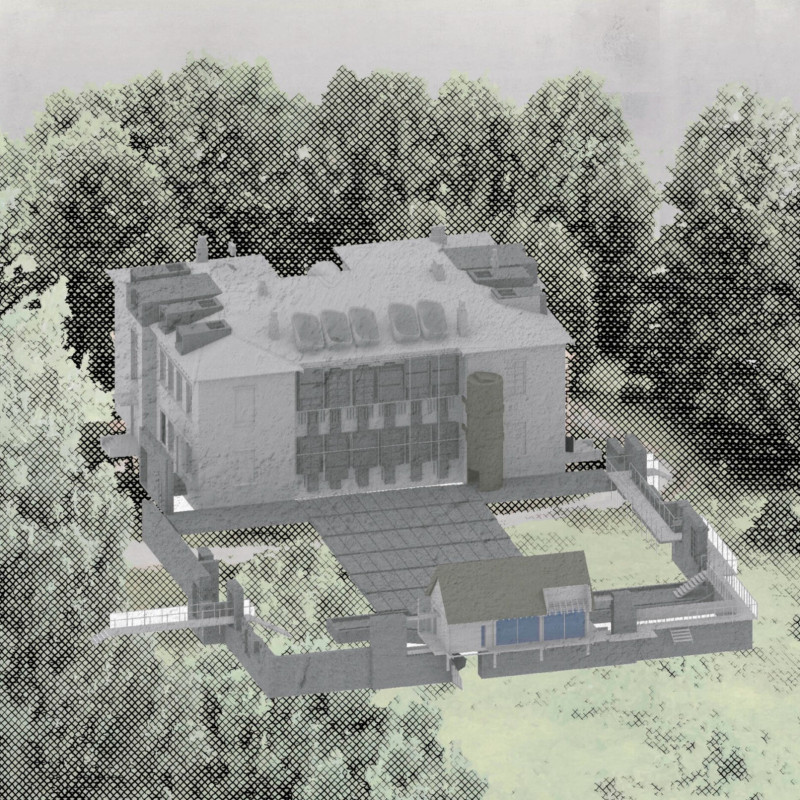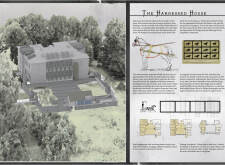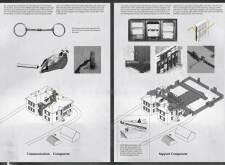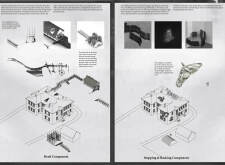5 key facts about this project
The design explores the complex relationship between horses and humans, focusing on how this connection informs the creation of functional spaces. Set in a context that encourages interaction, the concept imagines the existing building as a representation of a horse, while proposed extensions act to enhance its overall purpose. The aim is to foster connectivity among users and to create a welcoming environment.
Communication Component
The project uses the idea of a harness as a central theme, particularly its four main components. The communication aspect serves to shape movement within the space, acting like a bridle that directs how people navigate through various areas. This design enables a fluid interaction, where visitors can engage with both the architecture and each other, promoting a lively atmosphere.
Draft Component
The draft component emphasizes communal spaces, where social activities can thrive. Areas are designed for gathering, enhancing opportunities for interaction and collaboration among users. This thoughtful arrangement encourages a sense of community, allowing for shared experiences within the architecture.
Support and Stopping and Backing Component
The support component provides stability while connecting old and new structures cohesively. A prominent concrete element is incorporated into the design, grounding the overall composition. Meanwhile, the stopping and backing component introduces flexibility, allowing the space to adapt to user needs and activities throughout the day.
Regional Influences and Design Details
The use of a reed thatch roof ties the project to local building traditions. This choice not only provides effective insulation but also balances the existing heavier concrete forms with a lighter appearance.
Ample natural light enters the building through well-placed light wells. This feature brightens key areas, creating a warm atmosphere that invites occupants to interact with their surroundings. The design details reflect a deeper understanding of organic forms, reinforcing the connection to the theme of horse anatomy.





















































